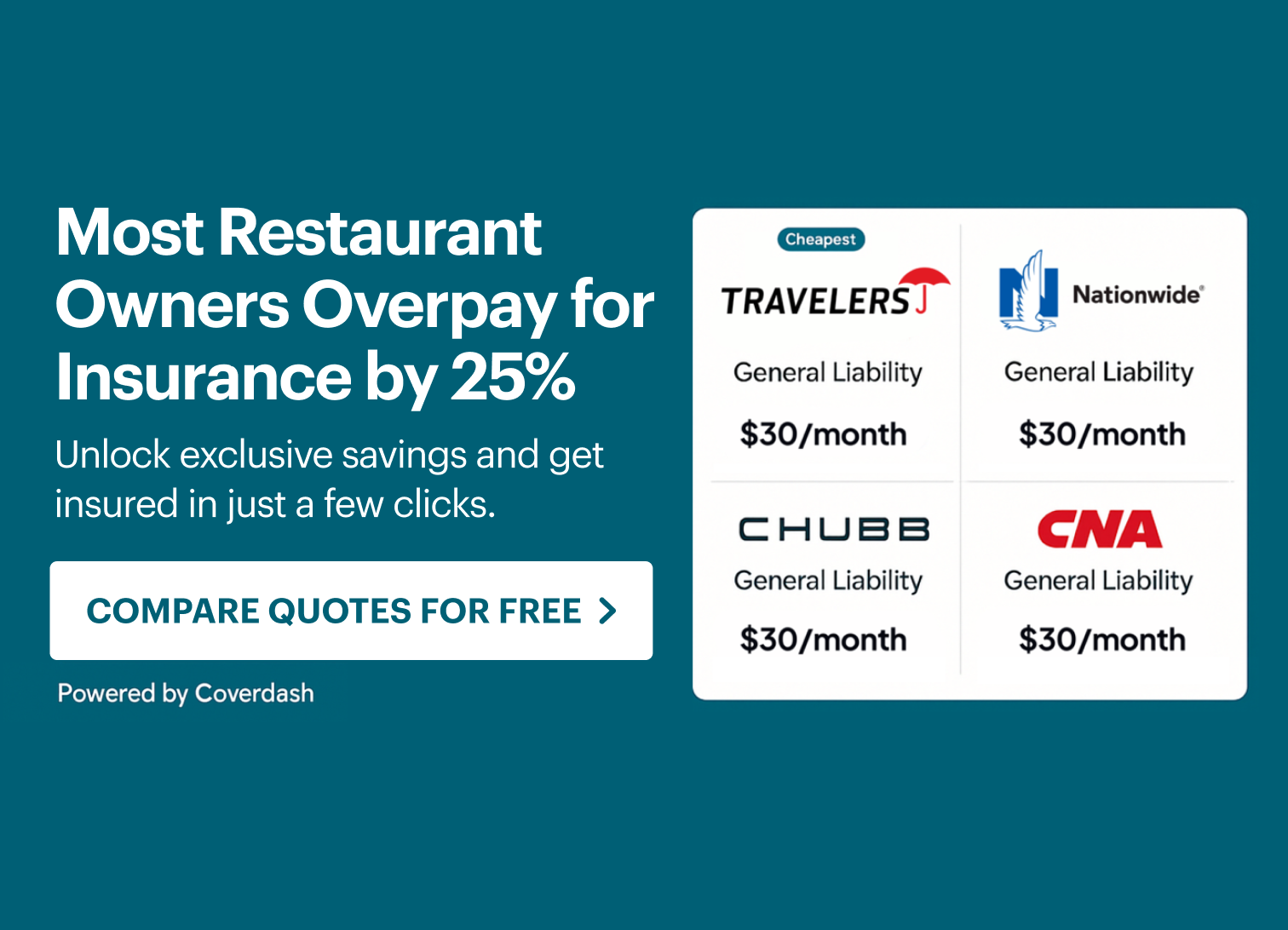It’s time to begin brainstorming restaurant menu ideas for your restaurant. This is the fun part! You get to experiment with recipes, host tastings for your friends, and eat a lot of good food. Of all the tasks you have to do as a new restaurateur, this is one of the most enjoyable.
You’ll want to consider many things when you’re brainstorming restaurant menu ideas, like:
- How can I reuse ingredients across recipes?
- How can I minimize your food costs?
- How can I create memorable dishes that satisfy a variety of palates?
Brainstorming restaurant menu ideas and testing is just the first step to designing your menu. We talk more in other sections about how to finalize your menu, shop for inventory, and fix your prices. This section is just about how to brainstorm and test your ideas.

You’ll walk away from this section knowing how to:
- Create a menu that appeals to a wide target market
- Develop a recipe master
- Narrow down your recipes
- Align your recipes to your concept
- Test your restaurant menu ideas
- Determine your price range and estimate food costs
This is where you take a tiny break from numbers (sort of) to dream.
Restaurant Menu ideas for a Wide Target Market
The idea for your restaurant concept perhaps evolved from a single dish or type of cuisine that you’re passionate about. Use this as your starting point – but make sure to go beyond it.
Great restaurants strike a balance between creating special experiences for their customers while including enough variety on the menu that there’s something for everyone.
Before you even begin to think about brainstorming ideas for your menu, here are three ways to frame your brainstorming so that you’re thinking about ways to appeal to a wider demographic.
- Jump on food trends.
Jumping on food trends can be tricky business. You’ll only want to jump on a trend when it feels natural for your core concept, rather than trying to make something work when it just … doesn’t.
When it makes sense to do so, however, jumping on a trend can help you expand your market reach and differentiate yourself from competitors. When you start thinking about trends during the concept phase, you’re more likely to end up with a well-rounded list of offerings that include classics and specialty items that create buzz.
So don’t ignore trends when you’re brainstorming dishes for your menu – but only jump on bandwagons that are naturally rolling past your concept anyway.
- Reinvent classics.
When you take a new approach to a classic recipe, you separate yourself from competitors. Most pubs may have a macaroni and cheese dish, but what makes yours different? You may use a special sauce or another specialty ingredient, like seafood or gorgonzola cheese.
You don’t have to reinvent the wheel, but you should be thinking about ways to be different.
Another option is to focus your menu on a single dish that’s been reinvented in many ways.
Say you’re opening a restaurant that specializes in lasagna. It’s obvious you would have a traditional lasagna dish on the menu, but how can you amp this up?
Maybe you also include a lasagna with blue cheese and spinach, a Mexican lasagna with jalapeños and sour cream, a chocolate peanut butter dessert lasagna layered with graham crackers, and a sushi lasagna with raw fish and rice layers separated by nori.
Before you know it, you’ve got a full menu of reinvented lasagna recipes.
- Consider a fusion concept.
There’s no rule that says your restaurant has to stick to one type of cuisine. Your core concept may be built around the dishes your family ate together when you were a child, but you may have since collected knowledge and influence from various mentors from various cultural backgrounds along your journey as a food lover.
If you’ve always been interested in how different cultures have influenced each other’s cuisine over time, you may want to consider a fusion menu. With the proper consultation and care, fusion menus can appeal to a wider target market and open doors to offering customers a unique experience they can’t get elsewhere.
How to Create a Recipe Master
Before you start brainstorming and jotting down your best ideas, you’ll want to set yourself up for success.
That means creating a recipe master.
To keep your recipes organized within a recipe master, spreadsheets and/or software are your best friends.
A recipe master is a captain’s log of dishes that could end up on your menu. Your recipe master is a living, breathing document, so you’ll want to make sure its foundation is solid so you can easily add to it.
In this section we’ll describe the tools available to you for creating your recipe master and how to organize your list for easy navigation and scalability.
Recipe master tools
Microsoft Excel or Apple Pages
Microsoft Excel and Apple Pages are standard spreadsheet applications that can be accessed using cloud technology, which allows you to share or access the documents remotely via OneDrive or iCloud. Download the applications from the App Store or Google Play.
Pros: You can work offline.
Cons: Your documents are not as conducive to sharing or collaboration as Google Sheets. You’ll need to attach the document to an email to share them with someone else or download a separate application to enable collaboration.
Google Sheets
Google Sheets allows you to create spreadsheets and easily share them with other users so that editing is collaborative. Users can work within the same spreadsheet at the same time, and you can access Google Sheets from your mobile device.
Pros: Great for collaboration and mobility.
Cons: Unless you enable offline editing or download your spreadsheet, you must have internet access to edit the document.
MasterCook 15 Recipe software
MasterCook 15 Recipe allows you to store recipes, scale recipes, and perform cost and nutrition analyses. The software lets you create cookbooks and collaborate with others. MasterCook 15 Recipe is available for desktop and mobile.
Pros: Comprehensive solution.
Cons: It’s a paid product. Pricing ranges from $15.99 – $39.99 for a one-year subscription.
Creating your recipe master
Here’s how to organize your recipe master using the tools mentioned above.
Create a master list that includes the following fields:
- Course (appetizer, main, dessert)
- Source (where you found the recipe)
- Notes (on adaptation, competitor offerings, etc.)
- Price range (how competitors have priced the dish)
- Name of the recipe
When you create your recipe templates, you’ll want to create links to each document and insert them into your master list here.
pro tip: use consistent naming conventions for all recipes. for example: restaurant name_course_recipe name, which would translate to susie’s sandwiches_appetizer_salmon bruschetta.
Create a recipe list that includes the following fields:
- Recipe name (see above for naming conventions)
- Course (appetizer, main, dessert)
- Source (where you found the recipe)
- Portion size/serving (how many people the recipe feeds)
- Calories and nutritional information
- Ingredients: unit amount needed
- Procedures to follow
- Price range (how competitors have priced the dish)
- Meal cost
- Notes
4 Tips for Developing Restaurant Menu Ideas
- Remember your core concept and business plan
- Brainstorm by menu category
- Perform a competitive analysis
- Research market trends
Now that you’ve set up your recipe master, you’ll need to start developing your ideas. But where do you start? The creative possibilities are endless, and this is really a time to let your foodie chops shine.
There are, however, some concrete places to start so that your ideas remain focused and in line with your goals. Here are four ways to start developing your restaurant menu ideas.
- Remember your core concept and business plan.
You may have to kill some darlings – meaning some of your ideas may not fit within your business plan.
All your recipes should fit the scope of your business goals. If a delicious recipe doesn’t fit within your restaurant’s core concept, either adapt it or keep it in your slush pile for your next venture.
Be tough on your ideas! This requires an objectivity that can be difficult during the creative process. Put in the effort to remain realistic and focused within your creativity, and you’ll be setting yourself up to make a profit rather than flail in various directions from the very beginning.
- Brainstorm by menu category.
As you’re brainstorming recipes, keep in mind that you need to fill all menu categories: appetizers, mains, desserts (depending on your concept and venue type).
You may need to classify dishes by breakfast, lunch, and dinner.
Or think seasonally: classify dishes by spring, summer, winter, and fall.
The point is, when you brainstorm holistically, with all categories in mind, your recipe master will be well-rounded from the start.
- Perform a competitive analysis.
We’ll describe in greater detail how to perform a comprehensive competitor analysis from a business perspective, but there are some ways you can check out the competition sooner, during the conceptual stage.
When you’re brainstorming your own restaurant menu ideas, here are some ways you can check out the competition – to start thinking about how you can do better.
Check out their staple dishes.
- Choose five competitors.
- In a spreadsheet, list each item on their menu, categorized appropriately. List the competitor’s name beside each menu item, for sorting purposes.
- Sort the spreadsheet alphabetically by the category.
- Take note of duplicate menu items. This is a pattern, and it points to dishes that you should also consider offering.
Best selling and failing dishes
- Repeat the process above.
- Search for competitor reviews.
- Note which dishes were received well and which were received poorly.
If you see a trend of dishes that receive glowing or poor reviews, you can choose to modify your own recipe list based on what critics have been saying about similar dishes. You may also discover that you can iterate on a dish that’s been performing poorly in other restaurants, and do it better.
Review site analysis
Diners often specify which dish they had when they review restaurants on review sites. Review sites also often link to a restaurant’s menu, so you can easily cross-reference their menu with the reviews.
Here are some review sites that can help you check out what customers are saying about your competitors’ dishes.
- Search for a competitor. If you know of a specific competitor, enter their name into the search field. If you’re simply exploring an array of competitors, enter a cuisine type into the search field and pair it with any location.
- Once you’ve found a competitor, open their page and sort through the reviews.
- Look at reviews of all ratings. While five-star reviews are likely to be glowing and one star reviews are likely to be terrible, you might find the reviews in the middle are of equal value.
Yelp also has pictures of dishes. A quick check can help inspire your recipe presentation.
While OpenTable is primarily a reservation app, it’s also loaded with customer reviews.
- Search for a competitor: Choose a location and either enter a competitor’s name or a cuisine type in the search field.
- Once you’ve found a competitor, open their page. To view reviews, click the reviews button located under the restaurant’s name.
OpenTable rates restaurants by an average score for food, service, ambiance, value, and noise. It also provides filters for popular dishes.
For example: Toronto’s Planta restaurant has 12 reviews for their kimchi, 11 reviews for hot dogs, 7 reviews for dumplings, and 7 reviews for lettuce wraps. You can click on the filter to read the review about the dish.
Even after you’ve reviewed the most mentioned items, do a general scan of the reviews to see what other dishes customers are reviewing.
- Search for a competitor: type a location, cuisine, or competitor name into the search field.
- Before you go to the reviews, scroll down to the Overview section.
- Below this section, there is a small call out box for “Travellers Talk About.” This section contains what the restaurant is most known for. For example: New York’s Russ and Daughters is known for “brunch,” “herring,” and “lox.”
- Clicking on these items will bring you to a review of that specific item.
When you navigate to the general review pane, you can select filters for commonly reviewed dishes.
- Search for a competitor: Choose your location and then fill in the search field with cuisine or specific competitor.
- Once you’ve found a competitor, open their page and sort through the reviews.
- You can filter by popular reviews, all reviews, and blogs.
For a more comprehensive read of a guest experience and the dishes they consumed, the articles linked in the blogs section can add additional color to your analysis.
- Research market trends.
From November to January, national restaurant and food associations start publishing trend reports for the coming year. These reports cover all restaurant trends, including beverage trends, (coffee, cocktails, wine, beer, etc.), food trends (poke, sushi burritos, specialty macaroni and cheese, etc.), technology trends (POS, apps, smart equipment, etc.), and service trends. (delivery, menu education, etc.).
pro tip
be selective about which food trends you choose to incorporate into your restaurant menu ideas. while some trends are long lasting, others are fleeting. try to balance trends versus staples in your recipe mix.
Here’s where you’ll want to start for your research:
National Restaurant Association (NRA)
The NRA develops their annual forecast based on a survey of professional chefs who are members of the American Culinary Federation.
From the survey answers, the NRA distills the top twenty food trends predicted by chefs for the coming year. They distill answers by the following categories:
- Top 20 culinary trends
- Top 10 concept trends
- Trends by category: alcoholic beverages, breakfast and brunch, condiments and accoutrements, culinary concepts, dishes, global flavors, kids meals, non-alcoholic beverages, pasta and grains, produce, protein, restaurant concepts, sweets
- Trends heating up vs. trends cooling down
- Yesterday’s news (food trends no longer applicable) vs. perennial favorites (mainstay foods)
The NRA offers a long-form PDF report, which you can easily save and download for your reference. They also have a video (see below) that summarizes the information and a number of listicles that describe each trend in more detail.
Restaurants Canada
Restaurants Canada Chef Survey
Similar to the NRA’s What’s Hot Culinary Forecast, Restaurants Canada interviews chefs to determine food trends hitting the Canadian restaurant scene.
From the chefs’ survey answers, Restaurants Canada rates a variety of menu items and cooking methods as either “hot trends” (trends at peak popularity) or “up and comers” (trends that are gathering momentum in terms of consumer interest.)
You can watch a video (see below), download a one-page infographic, or download the full report. You must be a Restaurants Canada member to access the full report.
Menu Pricing & Ranges
When you’re starting to cook up recipe ideas, it’s important to get a sense of menu pricing. We’re not talking down to the cent at this point; at this stage, a price bracket will suffice. You can perform a thorough cost analysis once you’ve created a shortlist of recipes.
Competitive menu analysis
A competitive menu analysis is a study of the price, portion, and preparation of your competitors’ menu. When you complete a competitive menu analysis, your goal is to determine a benchmark for the price range.
There are two ways to perform a competitive menu analysis:
By item:
- Visit a competitor’s website.
- Open their menu.
- Locate the dish you’re looking price.
- Catalog the price of the dish in your recipe master.
- Repeat for at least five competitors, marking the lowest cost and highest cost to determine a general cost range.
By category:
- Visit a competitor’s website.
- Open their menu.
- For every food category, write down the highest and lowest price of items to determine the range (i.e. lowest cost for an appetizer vs. highest cost for an appetizer)
- Repeat for each food category.
- Repeat for at least five competitors.
When conducting your competitive menu analysis, consider the following variables:
Direct vs. indirect competition
When you’re performing a competitive menu analysis by category, include indirect competitors. While they might have a slightly different pricing structure or range than your direct competitors, they are still valid to your pricing analysis because you share the same target market.
Neighborhood or city
While you may not have a location at this point, keep in mind that menu prices can vary by neighborhood. Some neighborhoods might be more affluent, which means competitors in one neighborhood would have higher prices than a competitor in another neighborhood.
If you haven’t established your restaurant’s neighborhood, broaden your scope. Use local competitors from the city you’ll be operating in and add five more competitors to get a more general range of pricing trends in your city.
Target market
The competitors you’re analyzing should have a target audience that falls within the same income bracket as your target market. For example, a modern, hip Chinese restaurant might compete with a neighboring traditional, family-style Chinese restaurant – but the price each target market is willing to spend could be very different.
Calculate your recipe costs
After your competitive analysis, you’ll want to start calculating your recipe costs.
note: since we’re dealing with hypothetical menu items at this point, you don’t want to spend too much time costing out recipes that won’t make it on the menu. save the robust menu costing for when you’ve established the first draft of your menu.
To begin, get a rough estimate each dish’s cost by following these steps:
- List the ingredients of the dish.
- Calculate the cost of each ingredient, down to the carrot.
- Add together the total ingredient costs of the dish.
- The result is your basic food cost.
Menu Testing
This is the fun part: testing your ideas to see which ones get the biggest applause from your target market. This is the first step to getting your recipes out into the world of hungry bellies and scrutinizing palates.
Here are 3 ways to test your menu.
- Host a tasting party.
You’ll want to host a tasting party to get feedback on a large number of potential menu items. Invite between 5–10 guests to join you for an afternoon/night of recipe tasting.
At this point, you likely don’t have service staff to give you feedback, so you’ll have to rely on the feedback of those in your circle. Use your discretion when choosing friends, family members, business partners, or old colleagues.
The guests you choose should come with an open mind but shouldn’t shy away from giving you their honest opinion. To get unbiased feedback, ask your connections to bring along a friend you don’t know.
Here are some things to consider when choosing which menu items you’d like to test:
- Base your menu test on competitors’ menus
- Test out different variations of a single dish
- Choose the dishes you feel will perform best on your menu
- Choose dishes based on input from your advisors or restaurant consultant
Create a form to distribute at the beginning of the evening, and instruct guests to complete the feedback after they’ve tasted each recipe. Don’t wait until the end of the night to solicit feedback – get their impression immediately.
Here is what you’ll want to include on the feedback form:
- Dish name
- Taste: What did you like? What did you not like?
- Texture: What did you like? What did you not like?
- Appeal: Would you order this on a menu? Why or why not?
- What, if anything, would you change?
- Comments
If all your guests raved about a dish, then consider adding it as one of your recipe finalists. If all guests but one liked a dish, consider their feedback, but also understand that you’re not going to please everyone. If all guests disliked a menu item, scrap it or find a way to drastically improve it.
You’ll also want to perform a self-check. For each dish, answer the following questions:
- How easy was the dish to prepare?
- Does the dish have the same ingredients as other recipes?
- Did the dish take a long time to prepare and cook?
- What was the cost of this recipe in comparison to the other recipes?
Even if guests raved about a particular dish, if the process of preparing it was too onerous, you will have to innovate a way to make preparation easier. Or you’ll have to pass it over for an easier recipe.
- Consult restaurant experts.
You’ve hired a restaurant consultant for a reason (recommended). For a fee, your restaurant consultant will review the recipes you’re hoping to include on your menu. They’ll be able to give you valuable feedback on:
- Taste: what’s missing and whether the recipe is up to commercial standards
- Marketability: whether the dish is appealing enough to sell
- Ingredient selection: whether you’re using superfluous ingredients and how to maximize your use of ingredients
- Feasibility: whether or not the recipe is feasible for a commercial kitchen
- Do a lunch drop off.
The idea behind a lunch drop off is this: identify a connection who works in an office environment and offer to cook lunch for the office.
Here’s how to do a lunch drop off:
- Confirm the number of people you need to cook for with your connection.
- Confirm with your connection that HR approves. Confirm allergies and dietary restrictions.
- Make a batch order of the dish you wish to test, and package each dish individually. (Note: provide people with options ahead of time if you wish to test a couple recipes.)
- Drop off the order at your connection’s office, along with your feedback form (see above).
- Pick up the feedback forms after lunch.
- Same as with a tasting party, consolidate the feedback. Keep an eye out for trends and view anomalies with discretion.
- Perform a self-check, just as you would with a tasting party.
When you test your menu in a variety of ways, you’ll be getting a holistic sense of how your target market will respond to your menu. Testing is a crucial part of opening a restaurant, as you’ll want to make 100% sure that people don’t hate what you’re offering!
Some recipes will be a hit. Other recipes with need major adjustments. Still more go straight into the trash. The process of brainstorming, evaluating, and testing restaurant menu ideas can mean ruthlessly axing recipes that don’t fit or don’t work.
As you move forward with developing a concrete menu, always make sure to ask yourself the most important question: does my menu ultimately fit within my goals? The answer you get is crucial to whether or not your concept will work as a cohesive, marketable idea that will generate profit.
Sign up for our free weekly TouchBistro Newsletter





